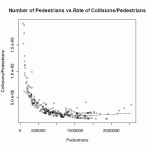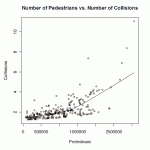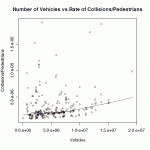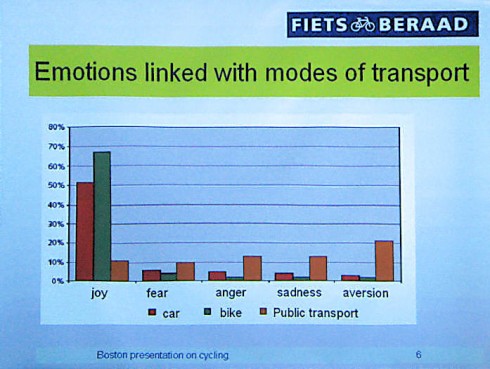A procedure exists through the Federal Highway Administration to encourage experimentation in transportation projects. This procedure defines new, nonstandard treatments as experimental, and requires that research data be collected, so that non-standard designs may serve to direct the standards-setting process, a very desirable outcome. In compensation for the burden of conducting research, this procedure exempts projects from liability risks.
But there may be a hitch at the Massachusetts level. Massachusetts General Statutes, Chapter 85, Section 2, does not appear to offer any exemption from the Massachusetts Department of Transportation’s Project Development and Design Guide or the Department’s standard municipal traffic code and amendments to the Manual on Uniform Traffic Control Devices (open the PDF linked on the page: it contains both.).
Is there a procedure for experimentation? If so, how it is handled and by whom at MassDOT — and if not, how a procedure be established? I have not found a description of such a procedure anywhere.
The relevant wording in the statute is as follows. I have given some organization to the impenetrable block of text on the Commonwealth’s Web page. I have also added a few descriptive notes, which I have boldfaced.
Approval by DOT is not required if installation conforms to its manual.
…Except as hereinafter provided, any rule, regulation, order, ordinance or by-law of a city or town hereafter made or promulgated relative to or in connection with the erection or maintenance of signs, traffic control signals, traffic devices, school zones, parking meters or markings on any way within its control shall take effect without department approval provided such signs, traffic control signals, traffic devices, parking meters, school zones or markings are in conformance with the department’s current manual on uniform traffic control devices and the department’s sample regulation for a standard municipal traffic code; provided, however, that such rule, regulation, order, ordinance or by-law shall not take effect until approved in writing by the department, or be effective after such approval is revoked, if made or promulgated relative to or in connection with the following:
Exceptions, when approval by DOT is required
- any way at its intersection or junction with a state highway;
- any project which is or was federally aided, in whole or in part;
- any traffic control signal or flasher in any city or town which does not employ a registered professional engineer in the commonwealth to design, redesign or change the timing and sequence of signal or flasher;
- any sign excluding heavy commercial vehicles;
- any school zone establishment or signing in relation to which the city or town intends to seek reimbursement from the commonwealth;
- any one-way street sign not placed at an intersection of public ways;
- any rule, regulation, order, ordinance or by-law of a city or town which when made or promulgated would exclude motor vehicle travel on any existing way which connects one city or town with another, unless such rule, regulation, order, ordinance or by-law was promulgated in compliance with the following:
- the rule-making body of the city or town initiating such rule, regulation, order, ordinance or by-law gives written notice of such action to the chief executive officer of the abutting city, town or county into which the said way extends, and
- a public hearing is held by the city, town or county initiating such alteration, relocation or discontinuance, public notice of which must be published for each of the two weeks preceding such hearing in a newspaper of general circulation in the abutting city, town or county into which the said way extends, and
- after concurrence in writing by the chief executive officer of the abutting city or town into which the said way extends or his designee. Notwithstanding the foregoing, speed control signs may be established only in accordance with the provisions of section eighteen of chapter ninety.
Penalties
If any city or town installs and maintains any of the aforesaid traffic control devices without either requesting or obtaining the required approval or after being notified of such disapproval, or in noncompliance with said manual, the department shall withhold or withdraw the unexpended balance of any funds assigned to the said city or town under the provisions of section thirty-four of chapter ninety or sections twenty-five and twenty-six of chapter eighty-one.
Any traffic control device which has not been erected or maintained in accordance with the foregoing provisions may be removed by or under the direction of the department and be stored by the department until claimed by the owner or, if not claimed within sixty days after written notice to said owner, may be disposed of at the discretion of the department. Color and arrow indications of traffic control signals shall have the commands ascribed to them in said manual.
Flashing white walk signal is prohibited.
The use of the flashing white walk pedestrian signal indication, as defined in the official standards of the department, is prohibited. The superior court shall have jurisdiction in equity to enforce the provisions of this section and section one, and also sections one and four of chapter eighty-nine and any rule or regulation made thereunder or to enjoin the violation thereof.
Signs warning of children with disabilities are exempted.
The provisions of this section shall not apply to the installation by any city or town, on any way within its boundary, of signs warning motorists of the presence of blind, deaf or otherwise handicapped children in the vicinity.
Since 2002, I have been a member of the National Committee on Uniform Traffic Control Devices Bicycle Technical Committee, which reviews projects that relate to bicycling. No requests to experiment have come to the Bicycle Technical Committee from Massachusetts, though there has been a fair number of projects which do not conform to standards.
The present situation on the one hand discourages experimentation, and on the other hand encourages installation of nonstandard treatments without the benefits of experimentation. Compounding this problem, the Commonwealth is not policing the work of cities and towns. It is not necessary to look far to find installations which fail to comply with statute. It causes real problems when, for example, signs are difficult to interpret, or unreadable at the distance from which drivers view them. Consider, for example, these examples of pedestrian signs.
Lax enforcement by the Commonwealth of design standards in local projects has allowed this situation to continue. Sovereign immunity laws in Massachusetts allowing limited recovery have prevented pressure to enforce the standards by way of civil actions.
Nonstandardization is an acute issue with all types of facilities, but it is particularly acute as it applies to bicycle and pedestrian facilities, where new treatments are frequently being suggested and implemented. We suffer at the same time from a lack of standardization, and from a lack of guidance in experimentation.





